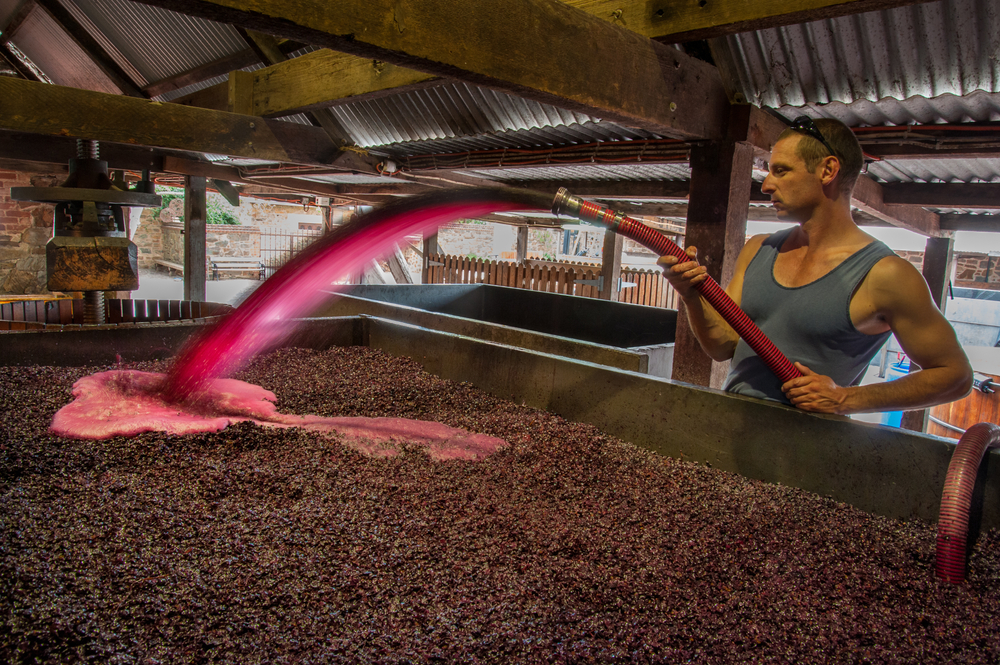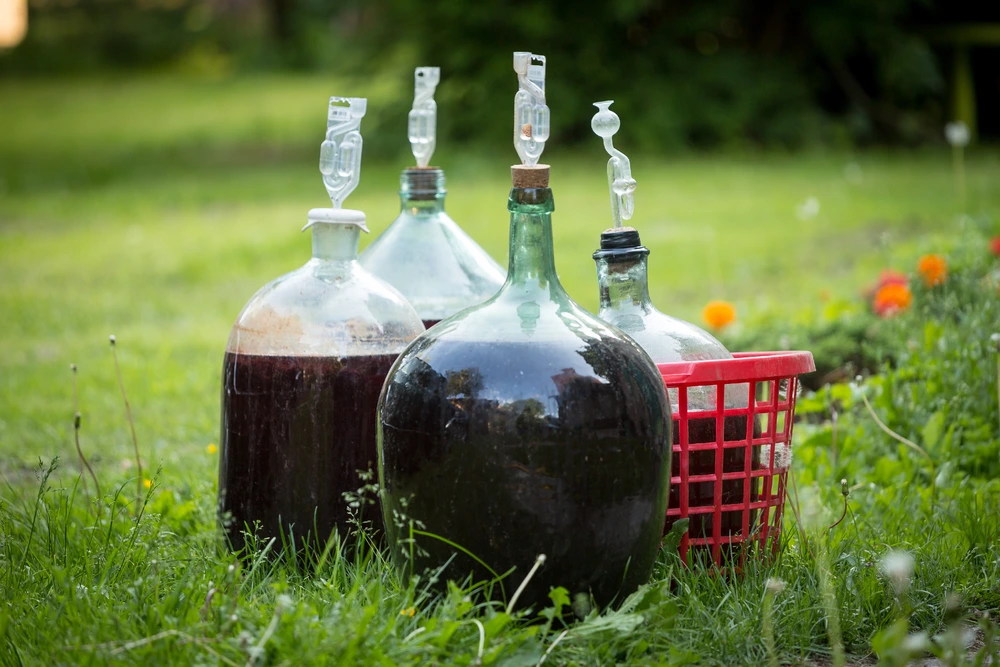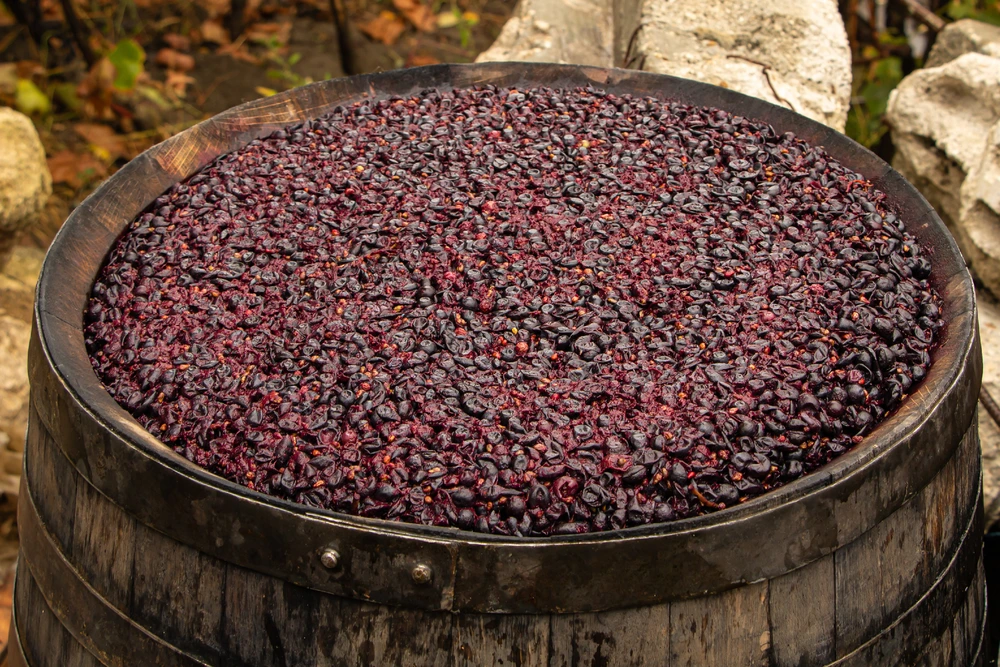You have probably heard the common saying; ‘aged like fine wine’, but exactly how aged is fine fine? If you are someone that likes to enjoy the occasional bottle of wine, then you might be left wondering how long it actually takes to make it.
All good things take some time, and this is no different when it comes to the making of wine.

While it can vary between different types of brands of wine, there is one thing that has always been very clear, and that is that it takes a lot of time and patience to create the perfect wine.
In this article, we are going to break down the time that is taken to carry out some of the major aspects of wine making, so you can find out exactly how the process works.
This will help to give you a better understanding of how long it takes to make different types of wine, and what can influence this length of time.
What You Need To Know About The Grapes Used To Make Wine
If you are curious to learn more about how long it takes to make wine, the first thing that you need to know is that it isn’t just about the making process, as it can also depend on the ingredients that are used to make the wine, like the grapes.
The overall time that it takes to make wine will depend a lot on what is being used to make it. This could include the grapes that are used, or other fruits that are included in the ingredients.
There is a lot of time that will be dedicated to fermenting when it comes to such ingredients, and this can take varying lengths of time, depending on which fruits you are using and what end result you are trying to create.
How Long Does It Take To Make Wine Myself?
Tasteohiowines.com is reader-supported. When you buy via the links on our site, we may earn an affiliate commission at no cost to you. Thank you!
The time that it takes to make wine yourself will often depend on what you are using to make it. If you are looking for the easiest and least time consuming way of doing so, then you could get yourself your very own wine making kit, which will do half of the work for you.
Using wine ingredients kits will help to save you some time when it comes to the process of fermentation, and this is because packaged wine juices do not have skins or pulps in them.
As a result, the concentrated juices will clear up much faster, enabling winemakers to bottle the wine much sooner.
There isn’t a huge difference in the amount of time that it takes, but if you are in a rush, then wine ingredients kits are definitely the way to go.
However, if you are committed to the traditional wine making process of wine, then you might want to take your time a bit more to create your perfect blend.

The Process Of Making Wine
Now that you know a little bit more about some of the things that can influence the amount of time that it takes to make wine, we are going to share the wine making process with you from start to finish. This will help you to find out exactly what goes into making wine.
Getting Prepared And Cleaning
The first thing that needs to be done before the wine making process can even get started is the preparation. You will first need to clean all of your winemaking equipment before you even think about getting started.
If you don’t take the time to thoroughly clean all of your equipment, then there will be a very high chance that your months of preparation will go to waste.
This is why it is so important to properly clean and sanitize all of your equipment before you make a start.
Not doing so could allow things like dust or other particles and other residues to expose your wine to harmful bacteria and other microbes that are only going to hurt the profile and experience of your wine.
This bacteria can also be very harmful to your health, and make an otherwise perfectly good batch of wine go to waste.
More often than not, winemakers will tend to use chemical sanitizers, as they will help to get the job done more conveniently. Other more conventional methods can include immersing all of your tools in boiling water.
Either way, once you have finished cleaning all of your equipment, you will need to keep it in a place where the temperature is not volatile.
Once the cleaning is done, it is time to mix the wine, water, and all of the other additives in the fermenting bucket. Once you have mixed everything up and stirred it, you will need to seal the container.
The fermentation process will generally require that the temperature is consistent, so you will need to keep this bucket in a suitable location. This process can take anywhere between 2 to 3 hours.
Fermentation
There are two stages of fermentation, which are primary fermentation and secondary fermentation. Each of these stages can take up to 3 weeks. In the process of primary fermentation, the sugar in the juice will be fermented into alcohol.
This process will release carbon dioxide, and as soon as the amount of CO2 that is coming out starts to waver, it is an indication that the initial stage of fermentation is coming to an end.
Once the primary fermentation stage is over, it is time for you to remove any additives like oak chips and raisins from the wine. Once you have done this, you should transfer the wine from the fermenting bucket to a glass carboy.
The primary stage almost takes 10 days to complete, but if you want a stronger flavor of oak notes in your wine, then you should add some oak chips back in before you transfer the wine.
Following on from this, the rest of the sugar will convert into alcohol, which is the secondary fermentation stage. This stage is much more about measuring how dense your wine is in contrast to the water.
As the process starts to progress, the density of the wine will decrease. The density is measured with the specific gravity reading, and this is something that you can measure by using a hydrometer.
Different recipes will have different target stages of the gravity reading, but the reading will tell you when it is time to move on to the next stage. Just like the primary fermentation, this is a process that can take up to 3 weeks.

Clarification
At this stage, your wine will almost be ready. In the clarification stage, solids like tannis, dead yeast cells, and proteins will be removed from the liquid.
Then, the wine will be racked into a different vessel, like a stainless steel tank, and it will later be cleaned using fining or simple filtration.
The process of fining involves drawing out any unwanted particles by using adhesive material, like clay. The bigger particles will be taken out through filtration.
At the end of these processes, the wine that is left can be put into another container, ready for bottling. This is a process that can take up to 40 days. However, at the end of this time, your wine will finally be ready to be bottled.
Unfortunately, it still won’t be time for you to try your new creation, but it will instead be time to start cleaning and sanitizing your tools. When you have bottled the wine, you will need to keep it upright for at least 24 hours.
After this time, you should lay them down to moisten their corks.
When Can I Drink It?
The minimum amount of time that you should wait between bottling your wine and drinking it is one month. Although, you should remember that you won’t get the best of the aroma and flavor of the wine at this time.
For the full characteristic flavors to come through, you will need to age your wine for at least 3 months or more.
The recommended time for wine aging is ideally around 6 months. This is the same for all types of wine. Although, the general rule is the longer you can age your wine for, the better.
The more that you age your wine, the more diverse the flavor and notes will become. So, if you want to age your wine for longer than 6 months, that is completely fine.
- Shrimp Cocktail (and More) Wine Pairing Guide - 09/06/2022
- What Wine Serving Sizes Look Like: Standard Size and More - 08/06/2022
- How Much Sugar is in Wine: Glass and Bottle Sugar Content - 08/06/2022






